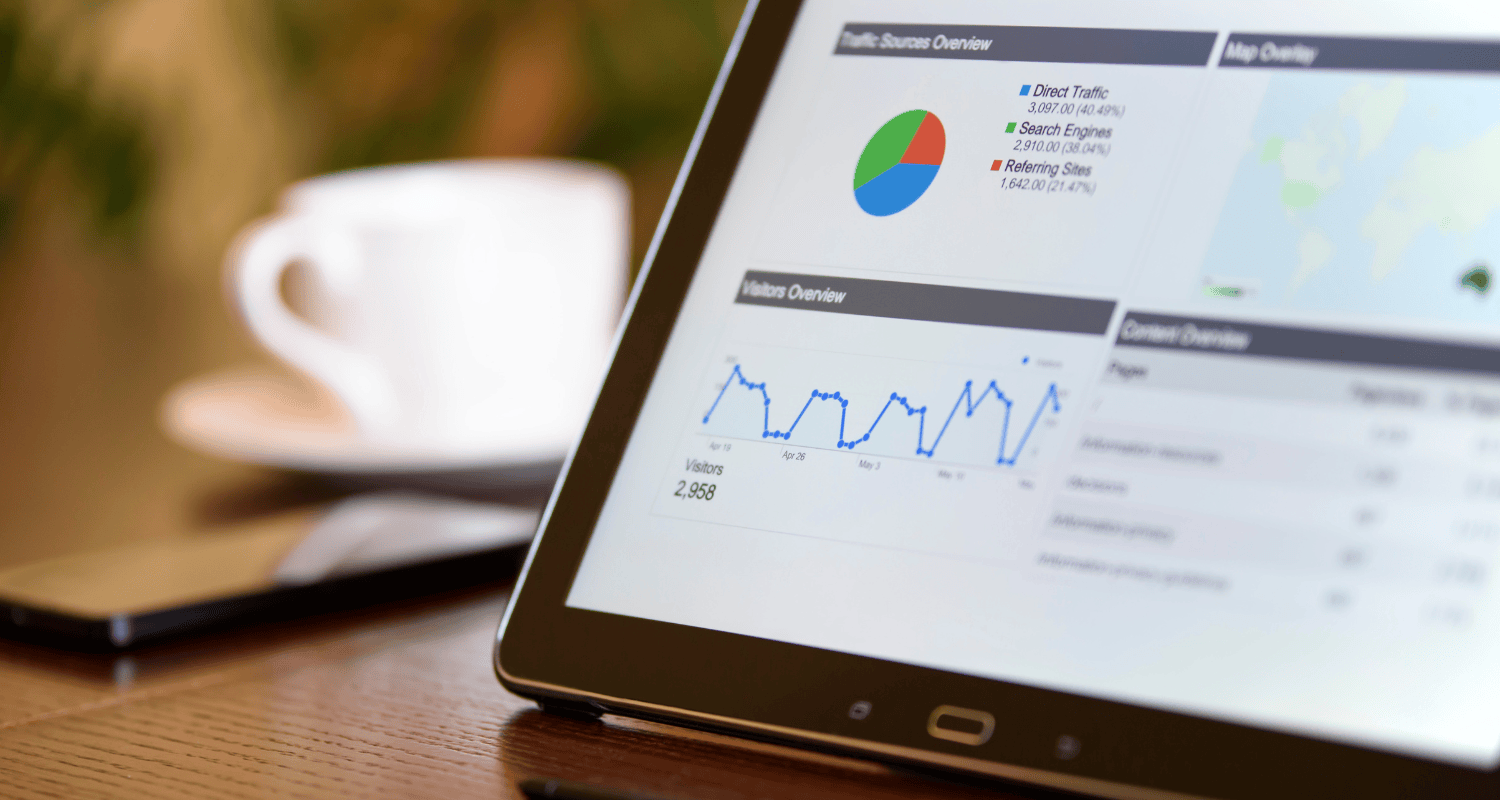Ecommerce analytics is one of the most powerful tools you have as an ecommerce store. They can tell a story about your business, help you to understand your customer, and can be leveraged to grow your sales.
Here’s how to use your ecommerce analytics to your advantage and use them to increase sales for your business.
What is ecommerce analytics?
Ecommerce analytics is the process of collecting, measuring, analyzing, and reporting on data from an online store. Most ecommerce platforms have analytics built into them, plus you can use third-party services like Google Analytics, Kissmetrics, and Mixpanel.
These tools allow you to collect and analyze data from your website, and they provide a variety of reports and insights that can help you improve your online store. The data you collect can be used to track website traffic, sales, and customer behavior.
Why measure your ecommerce analytics?
Ecommerce analytics can be used to help the performance of an online store in several different ways, including:
- Increased sales: By tracking website traffic and sales, you can identify what products are popular and what products are not. This information can be used to improve your product mix and marketing campaigns.
- Improved customer experience: Make your website better by monitoring what customers do and changing things so they can find what they want more easily.
- Reduced costs: By tracking marketing campaigns, you can identify which campaigns are effective and which campaigns are not. This information can be used to improve the efficiency of your marketing campaigns and save money.
Ecommerce analytics is a valuable tool for any online store. By collecting and analyzing data, you can improve the performance of your store and increase your profits.
What analytics should you focus on?
Analytics platforms collect so much data and information that it can feel a little overwhelming if you’re not sure where to start. There are some basic analytics that you should keep an eye on. Here are some of the key analytics to keep an eye on for ecommerce:
- Website traffic: This is the number of visitors who come to your website each month.
- Bounce rate: This is the percentage of visitors who leave your website after viewing only one page.
- Conversion rate: This is the percentage of visitors who take a desired action, such as purchasing or signing up for a newsletter.
- Average order value: This is the average amount of money that each customer spends when they make a purchase.
- Customer lifetime value: This is the total amount of money a customer is expected to spend with your business over their lifetime.
- Return on investment (ROI): This is the money you make from your marketing campaigns minus the cost of running those campaigns.
By tracking these metrics, you can get a better understanding of how your online store is performing. This information can be used to make informed decisions about how to improve your store and increase your profits. Remember to track paid and organic traffic and stats separately to get a real picture of what’s happening with your business.
Remember to use a variety of different data sources, get feedback from your customers, and try A/B testing to see what works for your audience or not. Data visualization tools can also make it easier to see what you’re working with and report on key analytics. Make sure you use your data in conjunction with other insights like customer feedback.
How can a business use audience insights to improve sales?
Audience insights are absolutely essential to your business. Your customers (and potential ones) are key to the success of your store, and the key to improving sales. First of all, you can start out by looking at the demographics of your audience to look for any patterns or opportunities to segment your customers.
This can make it easier to personalize your campaigns, offer specific offers or pick up on any trends. Even just understanding purchase history can help you to build up a picture of what your customer’s looking for and which products are more and more popular.
Acquisition metrics and improving sales
Acquisition metrics are important for understanding where your customers came from. This can help you understand how to reach your audience. For example, if they all come from Instagram or Google, then it makes sense to optimize that and seek opportunities to gain traffic, and sales, from other channels too.
Your customer acquisition cost is important. This is the amount of money you spend to acquire a new customer. This metric can help you determine whether your marketing campaigns are effective and efficient, meaning you can spend your budget more wisely. Many businesses focus on reducing their cost of acquisition down, whilst still gaining sales.
Behavior metrics and increasing sales
How your customers act once they’re on your site is important too. If customers exit the site quickly or all drop off on a certain page, then this can point to on-site errors or problems.
- Bounce rate is the percentage of visitors who leave your website after viewing only one page. A high bounce rate can indicate that your website is not engaging or that your content is not relevant to your target audience, so improving this can help sales. Generally, a bounce rate of 50% or under is considered good, though 70-80% is more average, according to Hubspot. This can vary by industry.
- Session duration is the average time visitors spend on your website. Long session durations indicate that your website is engaging and your content is relevant to your target audience. Pages per session is the average number of pages visitors view during each session. A high ‘pages per session’ can indicate that your website is well-organized and that your content is easy to find. Again, improving this can help with sales.
- Average order value shows the average amount of money each customer spends when purchasing. A high ‘average order value’ can indicate that your customers are satisfied with your products and services, whereas a low ‘average order value’ can help you understand your sales process. Are there opportunities to offer other products at checkout or upsell a better product to increase average order value?
Conversion metrics and increasing sales.
Your conversion metrics can tell you a lot about your customers. While it’s important to track the customers who make purchases, it’s also crucial to understand the behavior of those who don’t.
Conversion rate is the place to start. This is the percentage of visitors to your website who take action, whether that’s sign-ups, purchases, or something else. If your customers drop off at a certain point or you convert much better on some channels than others, it can indicate an issue or an area to focus on to increase sales.
Repeat purchase rates can also be a sign of customer experience, so if you’re not having many repeat visitors or sales, you might want to improve the process. It can also help you to get your head around how many touchpoints a customer has before they make a purchase. This can help you create more marketing resources to help improve repeat purchases. Understanding churn rate – the percentage of customers who stop buying from you – can help improve sales for the same reasons. It might indicate a problem.
How to measure your ecommerce performance
Some terms are used interchangeably regarding ecommerce performance, but they’re definitely not the same thing. By understanding the difference between these terms, you can use data to make informed decisions about your ecommerce business.
- Metrics: Metrics are the raw data you collect about your ecommerce business.
- KPIs: KPIs are key performance indicators that are used to measure the success of your ecommerce business.
- Analytics: Analytics is analyzing your data to identify trends and patterns.
- Reporting: Reporting is the process of presenting your data in a way that is easy to understand.
There are many different ways to measure your ecommerce performance. Some are built into your ecommerce platform or marketing channel, whereas others are third-party tools that integrate with your website. Here are some of the analytics tools that you can use:
- Google Analytics: A free tool that provides a wealth of information about your website traffic, including how many visitors you have, where they are coming from, and what pages they are viewing.
- Shopify Analytics: A paid tool that provides more detailed information about your Shopify store, including sales data, customer behavior, and marketing performance.
- Facebook Pixel: A piece of code you can add to your website to track conversions from Facebook ads.
It’s important to benchmark your ecommerce performance against other businesses in your industry too. You should keep an eye on your ecommerce performance regularly. This will help you to identify trends and make adjustments to your marketing campaigns as needed.
Tips to improve your ecommerce analytics metrics
When it comes to improving your ecommerce analytics, you want to make sure that you’re consolidating data from different channels. It can be too easy to jump to conclusions if you’re just using one dataset, and this can lead to expensive mistakes. Consolidating the data can help you to make more informed decisions that’ll benefit your business – you need to use analytics as a tool and information that’s viewed alongside your overall business goals.
The same goes for correlating your data with actual customers to get a better understanding of the bigger picture and understand how customers interact with your store. Seasonal trends can also impact customer behavior, so bear those in mind when looking at your analysis and coming up with conclusions. That’s why it’s essential to track metrics over time so you can get a true picture of how your ecommerce store is performing. This makes it easier to spot trends and make adjustments as needed.








